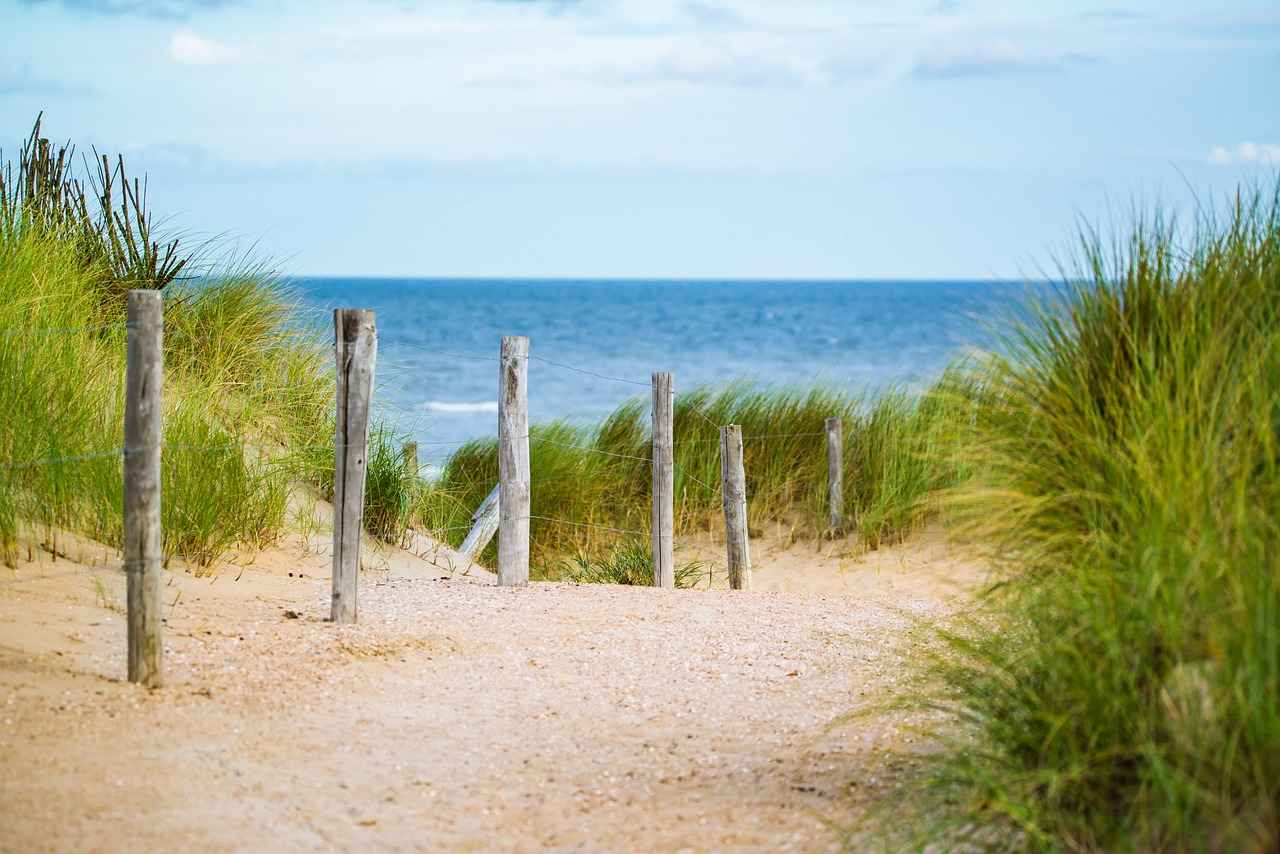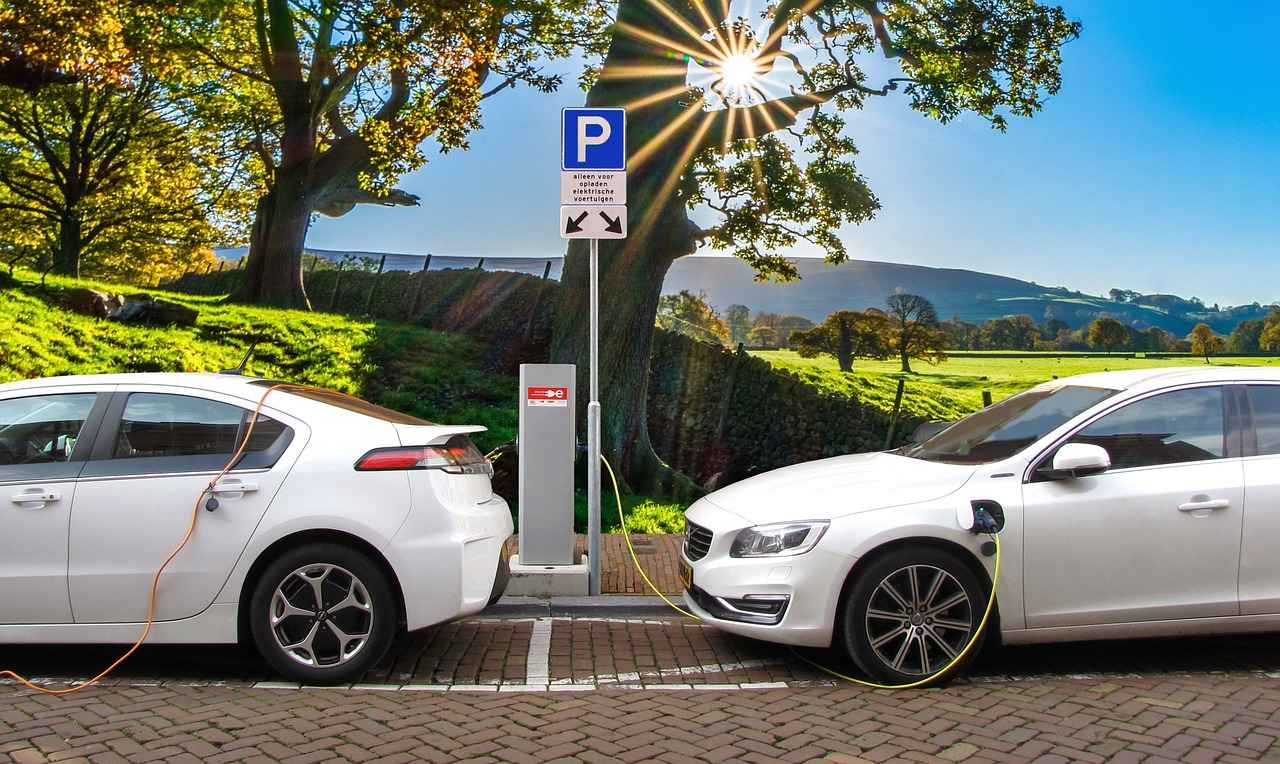This article delves into the top electric bikes ideal for beach and coastal riding. It highlights their key features, benefits, and provides essential tips for choosing the right bike for your adventures along the shore.
Why Choose an Electric Bike for Coastal Riding?
Electric bikes are an excellent choice for coastal riding due to their ease of use, extended range, and ability to handle sandy terrains effectively. They allow riders to explore scenic coastlines without physical exhaustion, making them perfect for beach enthusiasts.
Key Features to Look for in a Beach E-Bike
- Battery Life and Range: A robust battery is essential for long rides. Look for bikes with high-capacity batteries to explore without frequent recharging.
- Tire Type and Size: Fat tires enhance traction and stability on sandy or uneven terrain, making them ideal for beach conditions.
- Frame Design: A sturdy frame that can withstand the rigors of beach riding is crucial for a safe and enjoyable experience.
Top Electric Bikes for Beach Riding
| Model | Key Features |
|---|---|
| Rad Power Bikes RadRover 6 Plus | Powerful motor, impressive battery range, fat tires. |
| Blix Vika+ Flex Folding Electric Bike | Compact design, reliable performance, portable. |
Tips for Riding an Electric Bike on the Beach
- Adjusting Tire Pressure: Lowering tire pressure can significantly improve traction on sand.
- Choosing the Right Time to Ride: Riding during low tide ensures more stable ground for a smoother experience.
Maintenance Tips for Beach E-Bikes
- Cleaning and Protecting Your E-Bike: After riding, clean your bike to remove sand and salt, and consider protective coatings against corrosion.
- Regular Check-ups: Routine maintenance checks, including battery and brake inspections, are vital for reliability.
Conclusion: Finding Your Perfect Beach E-Bike
Choosing the right electric bike for beach riding involves understanding your personal needs and preferences. With the appropriate features and regular maintenance, you can have countless adventures along the coast.

Why Choose an Electric Bike for Coastal Riding?
Electric bikes have revolutionized the way enthusiasts explore coastal areas, offering a blend of convenience, versatility, and fun. With their unique advantages, these bikes are becoming increasingly popular among beachgoers and coastal adventurers. Here are some compelling reasons why you should consider an electric bike for your next seaside journey:
- Ease of Use: Electric bikes are designed for riders of all skill levels. The pedal-assist feature allows you to maintain a comfortable pace without exerting excessive effort. This is especially beneficial when navigating through sandy terrains where traditional bikes may struggle.
- Extended Range: Many electric bikes come equipped with high-capacity batteries, providing a longer range on a single charge. This means you can explore more of the coastline without worrying about running out of power. Whether you’re cruising along the shore or venturing into nearby trails, an e-bike ensures you have the stamina for the journey.
- Ability to Tackle Sandy Terrains: Electric bikes with fat tires offer enhanced traction and stability, making them ideal for riding on the beach. The wider tires distribute your weight more evenly, preventing you from getting stuck in soft sand. This feature allows you to enjoy the beauty of the coastline without the frustration of traditional biking challenges.
- Environmentally Friendly: Using an electric bike reduces your carbon footprint compared to driving a car or using gas-powered vehicles. This eco-friendly mode of transportation allows you to enjoy nature while being kind to it.
- Health Benefits: Riding an electric bike still provides excellent cardiovascular exercise. You can choose how much effort you want to exert, allowing for a customizable workout that suits your fitness level.
In conclusion, electric bikes are an excellent choice for coastal riding, providing a fun and efficient way to experience the beauty of the beach. Their unique features cater to both novice and experienced riders, making them a valuable addition to any beach enthusiast’s gear.

Key Features to Look for in a Beach E-Bike
When it comes to selecting the perfect electric bike for beach riding, there are several essential features to consider. These features not only enhance your riding experience but also ensure that your bike performs optimally on sandy terrains. Here are the key elements to focus on:
- Battery Life: A robust battery is vital for extended rides along the coast. Look for e-bikes equipped with high-capacity batteries that can last for several hours, allowing you to explore without the constant worry of recharging.
- Tire Type: The type of tires can significantly impact your performance on sandy surfaces. Fat tires are highly recommended as they provide better traction and stability, making it easier to navigate through loose sand.
- Frame Design: A well-designed frame is crucial for comfort and control. Opt for bikes with a sturdy yet lightweight frame that can absorb shocks from uneven surfaces, ensuring a smooth ride.
- Weight Capacity: Ensure that the e-bike can support your weight along with any additional gear you may carry. It’s essential for maintaining balance and stability on sandy terrains.
- Water Resistance: Coastal riding often exposes your bike to moisture and saltwater. Look for models that feature water-resistant components to protect against corrosion and prolong the life of your e-bike.
- Braking System: Effective brakes are critical, especially when riding on uneven surfaces. Consider bikes with hydraulic disc brakes for superior stopping power and safety.
By keeping these features in mind, you can select an electric bike that not only meets your needs but also enhances your overall beach riding experience.
Battery Life and Range
are two of the most critical factors to consider when selecting an electric bike, especially for long rides along the coast. A quality battery is crucial for ensuring that you can enjoy extended rides without the constant worry of needing to recharge. When evaluating electric bikes, it is essential to focus on models equipped with high-capacity batteries that offer impressive range capabilities.
Many electric bikes on the market today feature lithium-ion batteries, which are known for their efficiency and longevity. These batteries typically provide a longer range compared to traditional lead-acid batteries, allowing riders to explore vast coastal landscapes without interruption. Riders should look for bikes that offer a minimum range of 40 to 60 miles on a single charge, as this will enable you to enjoy a full day of adventure along the beach.
Additionally, it’s important to consider the charging time of the battery. Models that offer quick charging capabilities can significantly enhance your riding experience, especially during beach excursions where you might want to recharge during a break. Some bikes can recharge to 80% in under 4 hours, making it convenient for those who want to maximize their time on the sand.
Another aspect to keep in mind is the battery management system, which helps monitor the battery’s health and efficiency. A good management system can extend the battery’s lifespan and ensure optimal performance throughout its use. Riders should also familiarize themselves with the battery’s maintenance requirements to ensure it remains in top condition.
In conclusion, investing in an electric bike with a quality battery that offers extended range and quick charging capabilities will enhance your coastal riding experience. With the right bike, you can explore the beauty of the coastline without the constant concern of running out of power.
Types of Batteries Used
When it comes to electric bikes (e-bikes), the type of battery used plays a critical role in performance, longevity, and overall riding experience. The two most common battery types found in e-bikes are lithium-ion and lead-acid. Each has its own set of advantages and disadvantages that can significantly impact your choice of e-bike.
| Battery Type | Pros | Cons |
|---|---|---|
| Lithium-Ion |
|
|
| Lead-Acid |
|
|
Understanding these differences is essential for making an informed decision when selecting an e-bike. Lithium-ion batteries are generally recommended for those seeking efficiency and performance, especially for long rides or challenging terrains. On the other hand, lead-acid batteries may appeal to budget-conscious riders who prioritize initial costs over longevity.
Ultimately, your choice should align with your riding habits, budget, and the specific demands of your adventures. By weighing the pros and cons of each battery type, you can choose an e-bike that best suits your needs and enhances your riding experience.
Charging Time
The of an electric bike is a critical factor that can greatly influence your overall riding experience, especially for those who enjoy beach excursions. When planning a day out by the coast, the last thing you want is to be stuck waiting for your bike to recharge. Therefore, it’s essential to choose models that feature quick charging capabilities.
Modern electric bikes come equipped with advanced battery technology that allows for faster charging times. For example, some bikes can reach a full charge in as little as 4 to 6 hours, while others may take longer. This can be particularly beneficial if you’re taking a break during your ride; you can plug in your bike while you enjoy a meal or relax on the beach, ensuring it’s ready to go when you are.
Furthermore, consider the type of charger that comes with the bike. A fast charger can significantly reduce charging times, allowing you to maximize your riding time. Some manufacturers offer optional high-speed chargers that can cut the charging duration in half, which is a worthwhile investment for avid riders.
In addition to charging time, it’s also important to think about the battery capacity and range. A bike with a larger battery not only offers a longer ride but can also handle more frequent charging without degrading performance. This means you can enjoy longer rides along the coast without the constant worry of running out of power.
In summary, when selecting an electric bike for beach riding, prioritize models that provide quick charging options. This feature, combined with a robust battery, will ensure that your beach adventures are both enjoyable and hassle-free.
Tire Type and Size
Tires are a crucial component of an electric bike, especially when it comes to navigating sandy or uneven terrains commonly found at the beach. The type and size of tires can significantly affect the bike’s performance, traction, and overall riding experience.
For beach riding, fat tires are highly recommended. These tires are typically wider, providing a larger surface area that helps distribute the bike’s weight more evenly across soft sand. This design enhances traction and stability, allowing riders to maneuver effectively without sinking into the sand.
Fat tires often come in sizes ranging from 4 to 5 inches in width, making them ideal for tackling the challenges of coastal environments. Their ability to roll over obstacles smoothly contributes to a more comfortable ride, particularly on uneven surfaces. In contrast, standard tires may struggle to maintain grip and could lead to a frustrating riding experience.
Another important aspect to consider is the tire pressure. Lowering the tire pressure can further improve traction on sandy terrain. Riders should experiment with different pressures to find the optimal balance that offers both comfort and control. Generally, a pressure of around 10-15 PSI is recommended for fat tires on sand.
Additionally, the tread pattern of the tires plays a vital role in performance. Tires with a more aggressive tread design can provide enhanced grip, while those with a smoother surface may be better suited for pavement. It’s essential to choose tires that match your intended riding conditions.
In summary, selecting the right tire type and size is critical for maximizing your e-bike’s performance on the beach. Opting for fat tires with appropriate pressure and tread design will ensure a more enjoyable and safe riding experience along coastal paths.

Top Electric Bikes for Beach Riding
When it comes to exploring the beautiful coastline, having the right electric bike can make all the difference. These bikes are specifically designed to handle sandy terrains while providing comfort and performance. Below, we delve into some of the top models that stand out for their features, ensuring you have an exhilarating beach riding experience.
- Rad Power Bikes RadRover 6 Plus
This model is renowned for its powerful motor and impressive battery range. Its fat tires are perfect for navigating sandy beaches, providing excellent traction and stability. Riders appreciate its versatility, making it suitable for both urban and coastal adventures.
- Blix Vika+ Flex Folding Electric Bike
For those who prioritize portability, the Blix Vika+ Flex is an ideal choice. Its foldable design allows for easy transport, while still delivering reliable performance on coastal paths. This bike is particularly favored by those who enjoy beach trips and need a compact solution.
- Electra Townie Go! 7D
Combining style with functionality, the Electra Townie Go! 7D features a comfortable step-through frame and is equipped with a powerful battery for long rides. Its design is tailored for leisurely beach rides, making it a popular choice among casual cyclists.
- Rambo Bikes Roamer 750W
Designed for rugged terrain, the Rambo Roamer 750W is a robust e-bike that excels in sandy conditions. With its high-torque motor and durable construction, this bike is perfect for adventurous riders looking to explore off-the-beaten-path coastal trails.
In conclusion, selecting the right electric bike for beach riding can greatly enhance your coastal adventures. Each model offers unique features tailored to different riding styles and preferences. By considering the options above, you can find the perfect e-bike to enjoy the sun, sand, and surf.
Rad Power Bikes RadRover 6 Plus
is an exceptional electric bike designed for those who love to explore coastal paths and sandy beaches. This versatile fat tire e-bike is not only practical but also packed with features that enhance your riding experience.
One of the standout features of the RadRover 6 Plus is its powerful 750W motor, which provides ample torque for tackling various terrains, including sandy beaches. This motor ensures that riders can effortlessly cruise along the coast, even when faced with challenging conditions.
The bike is equipped with a 48V lithium-ion battery that offers an impressive range of up to 45 miles on a single charge. This extended battery life is crucial for beach enthusiasts who want to explore without the constant worry of running out of power. Additionally, the bike features a quick charging capability, allowing users to recharge in a fraction of the time compared to other models.
When it comes to tire performance, the RadRover 6 Plus boasts 4-inch fat tires that provide excellent traction and stability on sandy surfaces. This feature is particularly beneficial for beach riding, as it allows for a smoother and more controlled experience, even on loose sand.
Moreover, the bike’s sturdy aluminum frame not only supports the weight of the rider but also adds durability, ensuring that the RadRover 6 Plus can withstand the elements commonly found at coastal locations.
In terms of comfort, the RadRover 6 Plus features an adjustable suspension fork, allowing riders to customize their ride according to personal preferences and terrain. This adaptability enhances the overall riding experience, making it suitable for various coastal trails.
In conclusion, the Rad Power Bikes RadRover 6 Plus is a top choice for anyone seeking a reliable and powerful e-bike for beach and coastal adventures. With its combination of performance, comfort, and durability, it stands out as one of the best options for those who want to enjoy the great outdoors on two wheels.
Blix Vika+ Flex Folding Electric Bike
is a remarkable choice for those seeking a blend of portability and performance, especially for coastal adventures. This e-bike is designed with the modern rider in mind, offering a compact and lightweight structure that makes it easy to transport and store. Whether you’re navigating through coastal paths or cruising along sandy beaches, the Blix Vika+ Flex ensures a smooth and enjoyable ride.
One of the standout features of the Blix Vika+ Flex is its foldable design. This allows riders to easily fold and unfold the bike, making it perfect for those who may need to take public transport or store it in tight spaces. The bike weighs only 54 lbs, making it manageable for most riders. Additionally, its reliable performance is backed by a powerful motor that delivers a smooth ride, even on uneven terrains.
Another important aspect to consider is the bike’s battery life. The Blix Vika+ Flex is equipped with a high-capacity battery that provides a range of up to 40 miles on a single charge. This extended range ensures that riders can explore coastal areas without the worry of running out of power. Moreover, the bike features a quick recharge capability, allowing you to get back on the road in no time.
When it comes to handling sandy terrains, the Blix Vika+ Flex is equipped with puncture-resistant tires that offer excellent traction. This is crucial for maintaining stability and control while riding on the beach or coastal paths. The bike’s adjustable seat height and ergonomic design also contribute to a comfortable riding experience, catering to various rider preferences.
In conclusion, the is an excellent option for those who prioritize portability without sacrificing performance. Its compact design, impressive battery life, and ability to tackle sandy terrains make it a top choice for beach and coastal riders alike. Embrace your next adventure with this versatile e-bike, and enjoy the freedom it brings to your coastal explorations.

Tips for Riding an Electric Bike on the Beach
Riding an electric bike on the beach can be a thrilling experience, but it also requires careful planning and consideration. To ensure a safe and enjoyable adventure, here are some practical tips to enhance your beach riding experience:
- Adjust Tire Pressure: Lowering your tire pressure can significantly improve traction on sandy surfaces. A pressure between 10-15 PSI is often ideal for fat tires, allowing for better grip and stability.
- Choose the Right Time to Ride: Timing is crucial when riding on the beach. Opt for early morning or late afternoon when the tide is low, providing a firmer, more stable ground. Avoid riding during high tide when the sand is soft and loose.
- Stay Hydrated: Beach rides can be physically demanding, especially under the sun. Carry a water bottle and take regular breaks to stay hydrated and avoid fatigue.
- Wear Appropriate Gear: Protect yourself from the sun with a wide-brimmed hat, sunglasses, and sunscreen. Additionally, wearing comfortable clothing and sturdy shoes can enhance your riding experience.
- Be Aware of Your Surroundings: Beaches can be crowded with other cyclists, pedestrians, and wildlife. Always keep an eye out for potential hazards and be courteous to others sharing the path.
- Utilize Electric Assist Wisely: Use the electric assist feature to help you navigate through soft sand or uphill sections. This can conserve your energy and make your ride more enjoyable.
- Plan Your Route: Familiarize yourself with the beach layout and plan your route in advance. Look for designated bike paths or areas where riding is permitted to avoid any restrictions.
By following these tips, you can maximize your enjoyment while riding an electric bike on the beach, ensuring a safe and exhilarating experience. Remember, preparation is key to making the most of your coastal adventures!
Adjusting Tire Pressure
is an essential aspect of optimizing your electric bike’s performance, especially when riding on sandy terrains like beaches. Lowering your tire pressure can significantly enhance traction, allowing for a smoother and more enjoyable ride. This adjustment helps the tires to better conform to the uneven surface of the sand, improving grip and stability.
When riding on the beach, it’s crucial to experiment with different tire pressures to find the optimal balance for your bike. Typically, reducing the pressure to around 10-15 PSI can make a noticeable difference in how your bike handles on soft sand. However, the ideal pressure may vary based on factors such as your bike’s weight, tire type, and the specific sand conditions.
- Increased Surface Area: Lower tire pressure increases the contact area between the tire and the sand, which helps distribute your weight more evenly.
- Improved Shock Absorption: Softer tires can absorb bumps and vibrations better, providing a more comfortable ride over uneven surfaces.
- Enhanced Control: With better traction, you’ll find it easier to steer and navigate through sandy areas, reducing the likelihood of getting stuck.
It’s important to note that while lower tire pressure improves traction, it can also lead to increased rolling resistance on harder surfaces. Therefore, if you plan to ride on the pavement or packed trails, consider reinflating your tires to their standard pressure, usually around 30-40 PSI, to maintain speed and efficiency.
In conclusion, adjusting your tire pressure is a simple yet effective way to enhance your riding experience on the beach. Be sure to monitor the conditions and make adjustments as necessary to ensure both safety and enjoyment during your coastal adventures.
Choosing the Right Time to Ride
is crucial for beach enthusiasts looking to maximize their experience on electric bikes. Understanding the tides and their impact on beach conditions can significantly enhance your ride.
Riding during low tide offers an opportunity to explore more stable and firm ground. The receding waters leave behind compacted sand that is less likely to hinder your progress. This is especially important for electric bike riders, as soft, loose sand can make pedaling difficult and can lead to frustrating experiences.
When planning your ride, consider checking local tide schedules. Many coastal areas provide easy access to this information online or through local apps. By aligning your rides with low tide, you can enjoy:
- Improved Stability: The hard-packed sand provides a more stable surface, reducing the risk of sinking or getting stuck.
- Enhanced Speed: Riding on firm ground allows you to maintain a faster pace, making your rides more enjoyable.
- Scenic Exploration: Low tide often exposes tide pools and other unique coastal features, offering a chance to explore and enjoy the natural beauty of the beach.
However, it’s essential to plan your rides carefully. Arriving too close to high tide can limit your riding area and force you to navigate through soft sand. Always check the tide’s schedule ahead of time and aim to start your ride well before the tide begins to come in.
In summary, timing your rides to coincide with low tide not only enhances your riding experience but also ensures safety and enjoyment. Embrace the adventure that comes with riding on the beach, and make the most out of your electric bike journey!

Maintenance Tips for Beach E-Bikes
Riding electric bikes along the coast can be an exhilarating experience, but the saltwater and sand found in these environments can be particularly harsh on your bike. To ensure your e-bike remains in optimal condition for all your coastal adventures, regular maintenance is not just recommended; it is essential.
1. Cleaning Your E-Bike After Every Ride
After a day of riding on the beach, it is crucial to clean your e-bike thoroughly. Sand and salt can accumulate in various parts of the bike, leading to potential damage. Use fresh water to rinse off any salt and sand, paying special attention to:
- The frame and components
- The battery and electrical connections
- The wheels and tires
2. Applying Protective Coatings
To safeguard against corrosion caused by saltwater, consider applying a protective coating to the frame and components of your e-bike. Products such as marine-grade wax or anti-corrosion sprays can help shield your bike from the elements.
3. Regular Check-Ups
Routine maintenance checks are vital for ensuring your e-bike remains reliable. Focus on:
- Inspecting the brakes for wear and tear
- Checking the battery health and connections
- Examining tires for punctures or wear
4. Lubricating Moving Parts
Regular lubrication of moving parts, such as the chain and gears, can prevent rust and ensure smooth operation. Use a quality lubricant designed for bicycles to maintain performance.
5. Storing Your E-Bike Properly
When not in use, store your e-bike in a dry, cool place to protect it from moisture and direct sunlight. If possible, keep it indoors or use a protective cover if stored outside.
By following these maintenance tips, you can extend the life of your electric bike and ensure it remains ready for your next beach adventure. Regular care will not only enhance performance but also provide peace of mind as you ride along the stunning coastal paths.
Cleaning and Protecting Your E-Bike
After a fantastic day at the beach, it’s essential to take care of your electric bike to ensure its longevity and performance. The combination of sand and saltwater can be detrimental to your bike’s components if not addressed properly. Here’s a comprehensive guide on how to effectively clean and protect your e-bike after beach outings.
Begin by rinsing your bike with fresh water to remove any sand and salt that may have accumulated on the frame, wheels, and components. Use a gentle spray to avoid forcing sand into sensitive areas. Here are some steps to follow:
- Remove Accessories: Take off any removable accessories like baskets or lights to ensure a thorough cleaning.
- Wash the Frame: Use a soft cloth or sponge with mild soap to clean the frame and other surfaces. Avoid harsh chemicals that could damage the finish.
- Clean the Wheels: Pay special attention to the wheels and tires, as they are prone to collecting sand. Use a brush to get into the treads.
- Dry Thoroughly: After rinsing, dry your bike with a microfiber cloth to prevent water spots and corrosion.
To safeguard your e-bike from future damage, consider applying protective coatings. Here are some recommendations:
- Corrosion-Resistant Spray: Use a corrosion-resistant spray on metal parts to create a protective barrier against moisture and salt.
- Frame Wax: Applying a layer of wax can help protect the paint and finish of your bike, keeping it looking new.
- Lubricate Moving Parts: After cleaning, lubricate the chain and other moving parts to ensure smooth operation and prevent rust.
In addition to cleaning, regular maintenance is crucial. Check your brakes, battery, and tires frequently to ensure everything is in optimal condition for your next adventure.
By following these cleaning and protection tips, you can extend the life of your electric bike and enjoy countless rides along the beach without worry.
Regular Check-ups
are an essential part of maintaining the performance and reliability of your electric bike, especially when it comes to beach outings. Ensuring that your e-bike is in top condition not only enhances your riding experience but also prolongs the lifespan of the bike itself. Here’s a detailed look at why these checks matter and what to focus on.
First and foremost, brake inspections are critical. The sandy and sometimes uneven terrain of beach paths can put extra strain on your braking system. Regularly checking the brake pads for wear and ensuring the brake fluid is at the correct level can prevent accidents and ensure your safety while riding.
In addition to brakes, battery inspections are equally important. The performance of your electric bike heavily relies on the condition of its battery. Regularly checking for any signs of corrosion, ensuring connections are tight, and monitoring the battery’s charge level can help you avoid unexpected failures during your rides. It’s advisable to clean the battery terminals and check for any signs of damage or swelling, which could indicate a need for replacement.
Another aspect to consider is the tire condition. Make sure to inspect the tires for any signs of wear, cracks, or punctures. Proper inflation is also crucial, as under-inflated tires can lead to poor handling and increased resistance when riding on sand. Regularly rotating your tires can also help maintain even wear.
Lastly, don’t forget to check the frame and components of your e-bike. Look for any loose bolts or signs of rust, especially if you frequently ride in salty environments. A well-maintained bike frame will ensure a smoother ride and better handling.
In conclusion, conducting regular check-ups on your electric bike is vital for ensuring its reliability and performance, especially during beach outings. By focusing on brake and battery inspections, tire condition, and overall bike integrity, you can enjoy a safe and enjoyable riding experience.

Conclusion: Finding Your Perfect Beach E-Bike
In the quest for the ideal electric bike to enhance your beach riding experience, it is essential to consider a variety of factors tailored to your personal needs and riding style. With the right features and proper maintenance, you can embark on countless adventures along the coast, enjoying the sun, sand, and surf.
First and foremost, understanding your riding environment is crucial. Beaches can present unique challenges, such as soft sand and uneven terrain. Therefore, selecting a bike equipped with fat tires can significantly improve your traction and stability, allowing you to navigate through sandy areas with ease.
Another vital feature to consider is battery life. A high-capacity battery not only extends your range but also ensures that you can explore the coastline without the constant worry of running out of power. Look for models that offer quick charging options, which can enhance your overall experience by minimizing downtime.
Moreover, the frame design of the bike plays a significant role in your comfort and performance. A lightweight yet sturdy frame will make it easier to maneuver your bike, especially if you encounter challenging conditions. Additionally, consider the bike’s weight and portability if you plan to transport it to different beach locations.
Lastly, regular maintenance is essential to keep your electric bike in top condition. Make it a habit to clean your bike after rides, especially after exposure to saltwater and sand, which can cause corrosion and wear over time. Routine check-ups will ensure that your bike remains reliable for all your coastal adventures.
In summary, by taking the time to evaluate your specific needs, understanding the key features that enhance beach riding, and committing to regular maintenance, you can find the perfect electric bike that will provide you with endless enjoyment along the beautiful coastlines.
Frequently Asked Questions
- What are the benefits of using an electric bike for beach riding?
Electric bikes provide a fun and effortless way to explore coastal areas. They help you tackle sandy terrains with ease, extend your riding range, and offer a comfortable experience even on long rides.
- How do I choose the right electric bike for beach riding?
When selecting a beach e-bike, focus on key features like battery life, tire type, and frame design. Look for bikes with fat tires for better traction and stability, and ensure the battery has a long range to keep you riding longer.
- Can I ride my electric bike on the sand?
Absolutely! However, it’s best to use bikes with fat tires designed for sandy conditions. Lowering your tire pressure can also enhance traction and make for a smoother ride.
- How do I maintain my electric bike after riding on the beach?
After a day at the beach, clean your bike thoroughly to remove any sand or salt. Regular maintenance checks, including brake and battery inspections, will help keep your e-bike in top condition.
- What is the ideal time to ride on the beach?
Riding during low tide is recommended as it provides firmer, more stable ground. This helps you avoid soft, loose sand that can slow you down or make riding difficult.














